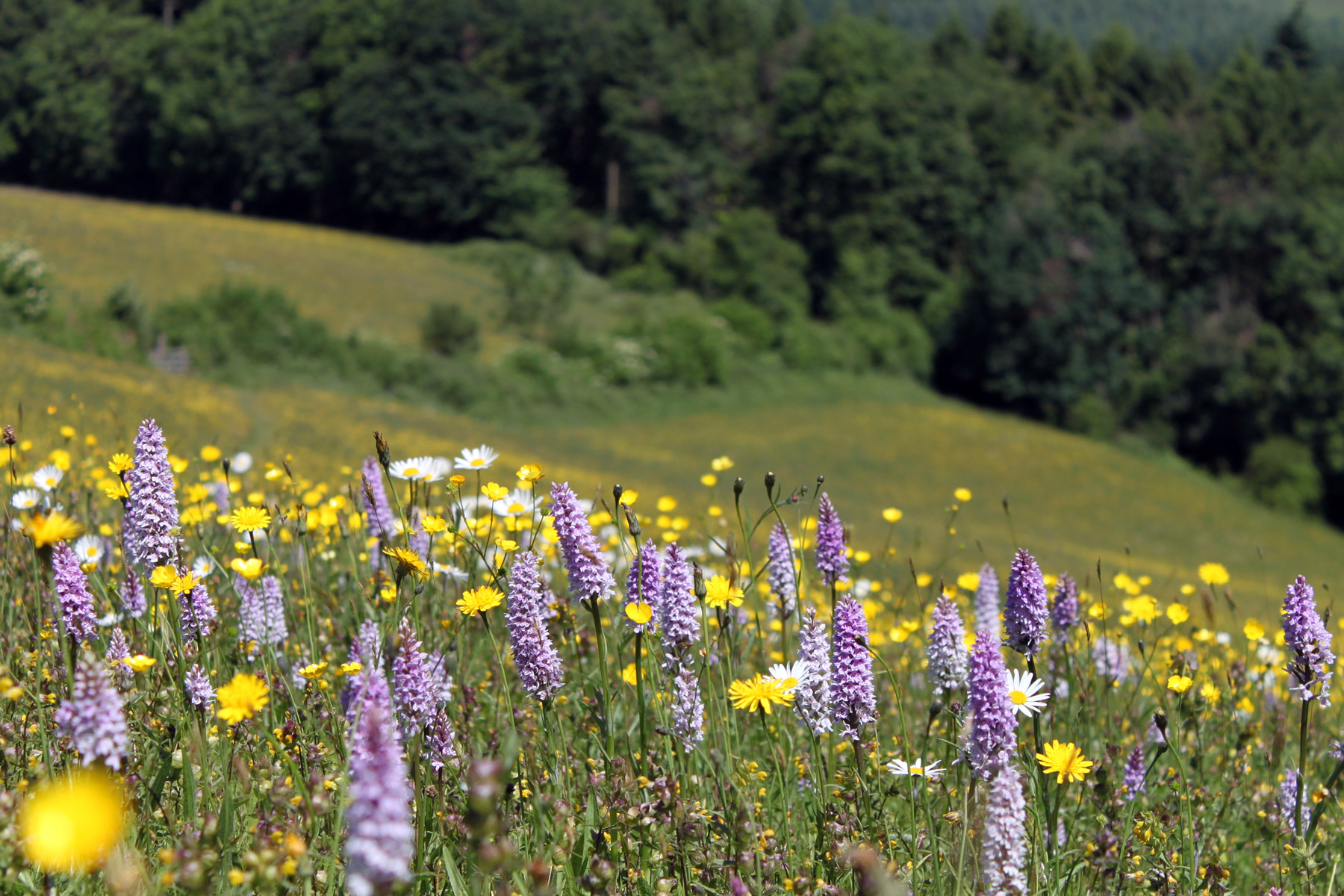In December Moor Meadows hosted two fascinating webinars on conservation grazing. Conservation grazing is livestock grazing that promotes biodiversity, encouraging wildflowers as well as creating a diversity of habitats for wildlife.
Speakers and topics in Part One :
Key speaker, Jerry Tallowin
An Introduction to Conservation Grazing: Conservation grazing aims to maintain and increase the biodiversity of natural or semi-natural grasslands like wildflower meadows, heathlands, wood pastures and fen-meadows. Jerry’s talk will cover the objectives of conservation grazing, the need to have a grazing management plan, using the right herbivores at the right density at the right time. Feeding preferences, physiology and livestock behaviour will also be discussed.
Desley White, Cows in Clover
Conservation Grazing with Native Breed Cows: Cows in Clover is a conservation grazing enterprise based in the Avon Valley, South Devon, that uses native cattle to graze grassland and wood pasture, for the benefit of wildlife. This talk will describe what they do, how they do it, and Desley will discuss some of the changes observed on the land the cattle inhabit.
Anna David, Animal Medicines Advisor
How to Support Dung Beetles and other Dung Fauna: Anna worked on the Devon Greater Horseshoe Bat Project with farmers to reduce the use of Avermectins and other worming products commonly used in Devon which impact on dung beetles and other dung fauna. Anna will discuss the use of wormers and their alternatives.
Watch again here.
Speakers and topics in Part Two:
Key speaker: Dr Pen Rashbass
The Essential Guide to Animal Health & Welfare when Grazing for Nature: In the UK, grazing animals ‘drive’ the ecology of nearly all grassland, heathland and woodland habitats. When using domesticated stock to perform this task, we need to consider not only the ecological objectives for the site, but also ensure that high animal health and welfare standards are maintained. Pen’s talk will cover good grazing management and an appreciation of why some animals are better suited to particular environments.
Phil Wilson, ecologist and grazier:
How Your Dinner can help Mitigate Climate Change – Carbon Storage in Species-rich Grasslands: We are gradually starting to appreciate how the soils of grasslands are as important as woodlands in storing carbon and minimising climate change. The carbon storage potential of different grassland types varies however, and their species-richness and management are critical. More than ten years-worth of soil data from grasslands managed under agri-environment schemes in England have helped Phil to understand these relationships.
Simon Berry, Senior Farm Advisor with the Devon Wildlife Trust
Grazing Wetter Meadows: Wet meadows, Culm and Rhos pastures are types of very damp grassland found throughout Devon but what are the key differences? Find out the best practice to manage them with livestock to create a mosaic of rich wildlife habitat.
Watch again here.
